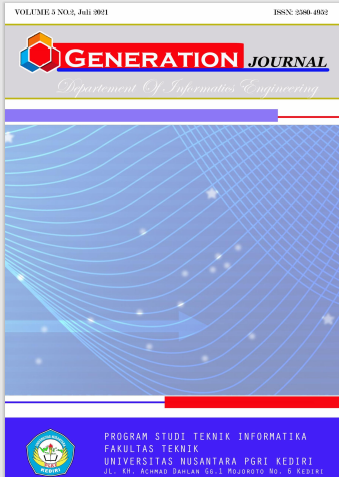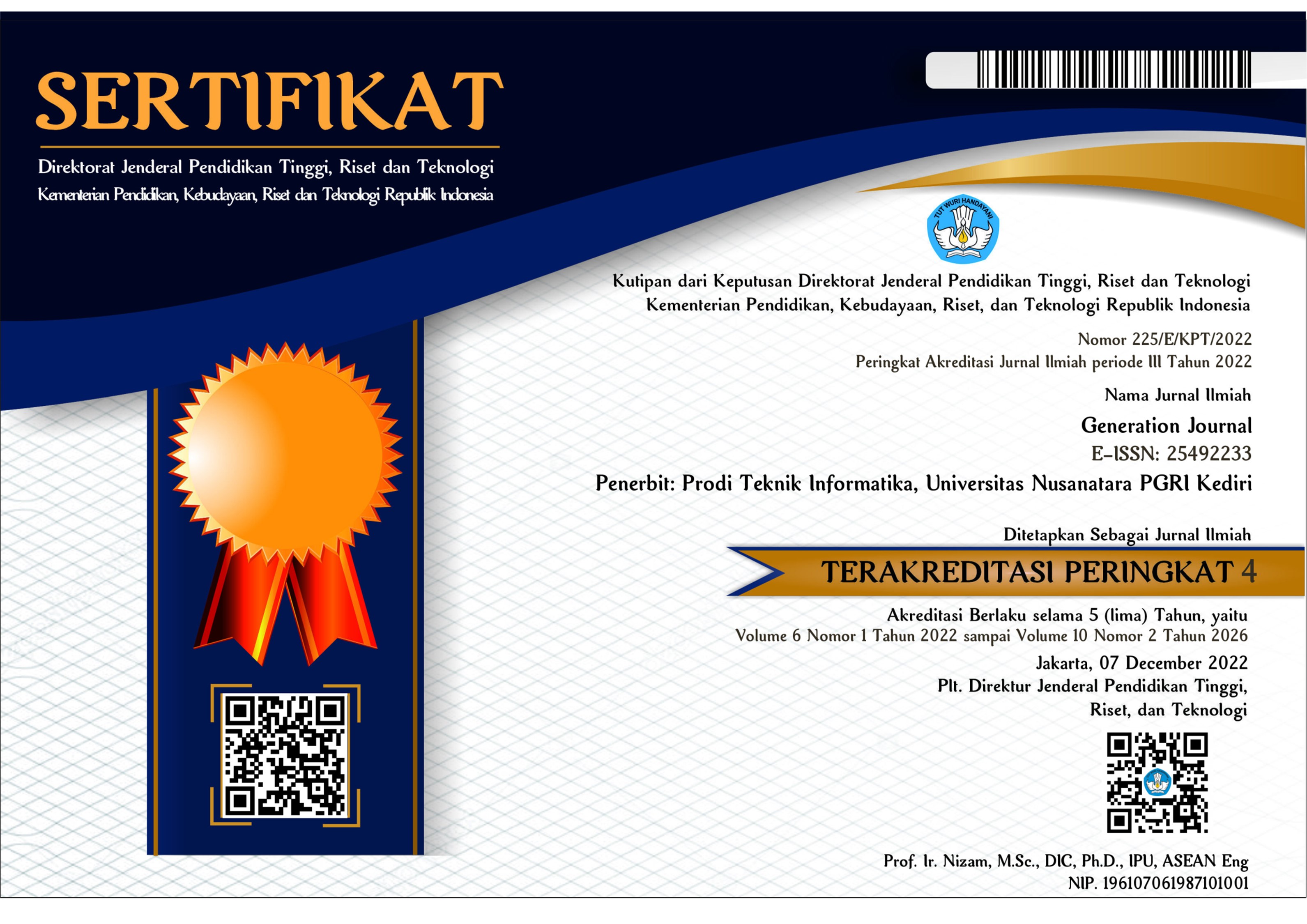Penerapan Algoritma Artificial Neural Network untuk Klasifikasi Opini Publik Terhadap Covid-19
DOI:
https://doi.org/10.29407/gj.v5i2.16125Keywords:
Covid-19, Public Opinion, Artificial Neural Network, Text MiningAbstract
Coronavirus disease (Covid-19) or commonly called coronavirus. This virus spreads very quickly and even almost infects the whole world, including Indonesia. A large number of cases and the rapid spread of this virus make people worry and even fear the increasing spread of the Covid-19 virus. Information about this virus has also been spread on various social media, one of which is Twitter. Various public opinions regarding the Covid-19 virus are also widely expressed on Twitter. Opinions on a tweet contain positive or negative sentiments. Sentiments of sentiment contained in a tweet can be used as material for consideration and evaluation for the government in dealing with the Covid-19 virus. Based on these problems, a sentiment analysis classification is needed to find out public opinion on the Covid-19 virus. This research uses Artificial Neural Network (ANN) algorithm with the Backpropagation method. The results of this test get 88.62% accuracy, 91.5% precision, and 95.73% recall. The results obtained show that the ANN model is quite good for classifying text mining.
References
[2] Satuan Gugus Tugas Penanganan Covid-19, “Homepage Gugus Tugas Percepatan Penanganan Covid-19,” 2020. [Online]. Available: https://covid19.go.id/. [diakses 2 Februari 2021]
[3] Satuan Gugus Tugas Penanganan Covid-19, “Analisis Data Covid-19 Indonesia Update Per 07 Februari 2021,” 2021. [Online]. Available: https://covid19.go.id/p/berita/analisis-data-covid 19-indonesia-update-7-februari-2021.
[4] Muthia, D. A., Putri, D. A., Rachmi, H., & Surniandari, A, “Implementation of Text Mining in Predicting Consumer Interest on Digital Camera Products,” The 6th International Conference on Cyber and IT Service Management (CITSM 2018), pp. 1-7, 2018.
[5] Sopian, A., Wiyatno, A., & Ryandi, A, “Komparasi Algoritma Support Vector Machine Dengan Algoritma Artificial Neural Network Untuk Memprediksi Nilai Persetujuan Kredit Modal Kerja yang diberikan Bank Umum,” Jurnal Teknologi Informatika & Komputer, vol. 5, no. 1, pp. 88-95, 2019.
[6] Ardika, R. B. P., Irawan, B., & Setianingsih, C, “Analisis Sentimen Data Pada BPJS Kesehatan Dengan Metode Backpropagation Neural Network,” e-Proceeding of Engineering, 2020, pp. 2-8.
[7] Rohmawan, E. P, “Prediksi Kelulusan Mahasiswa Tepat Waktu Menggunakan Metode Desicion Tree dan Artificial Neural Network,” Jurnal Ilmiah MATRIK, vol. 20, no. 1, pp. 21-30, 2018.
[8] Rozi, I. F., Pramitarini, Y., & Puspitasari, N, “Analisis Mengenai Calon Presiden Indonesia 2019 di Twitter Menggunakan Metode Backpropagation,” Jurnal Informatika Polinema (JIP), vol. 6, no. 2, pp. 27-31, 2020.
[9] Noviando, E. S., Ervianto, E., & Yasri, I, “Studi Penerapan ANN (Artificial Neural Network) Untuk Menghilangkan Harmonisa Pada Gedung Pusat Komputer,” Jom FTEKNIK, vol. 3, no. 2, pp. 1-6, 2016.
[10] Assuja, M. A., & Saniati, S, “Analisis Sentimen Tweet Menggunakan Backpropagation Neural Network,” Jurnal TEKNOINFO, vol. 10, no. 2, pp. 23-28, 2016.
[11] Solikhun., Safii, M., Trisno, A, “Jaringan Saraf Tiruan Untuk Memprediksi Tingkat Pemahaman Siswa Terhadap Mata Pelajaran Dengan Menggunakan Algoritma Backpropagation,” Jurnal Sains Komputer & Informatika (J-SAKTI), vol. 1, no. 1, pp. 24-36, 2017.
[12] Fibrianda, M. F., & Bhawiyuga, A, “Analisis Perbandingan Akurasi Deteksi Serangan Pada Jaringan Komputer Dengan Metode Naive Bayes Dan Support Vector Machine (SVM),” Jurnal Pengembangan Teknologi Informasi dan Ilmu Komputer, vol. 2, no. 9, 3112-3123, 2018.
Downloads
Published
Issue
Section
License
Authors who publish with this journal agree to the following terms:
- Copyright on any article is retained by the author(s).
- The author grants the journal, the right of first publication with the work simultaneously licensed under a Creative Commons Attribution License that allows others to share the work with an acknowledgment of the work’s authorship and initial publication in this journal.
- Authors are able to enter into separate, additional contractual arrangements for the non-exclusive distribution of the journal’s published version of the work (e.g., post it to an institutional repository or publish it in a book), with an acknowledgment of its initial publication in this journal.
- Authors are permitted and encouraged to post their work online (e.g., in institutional repositories or on their website) prior to and during the submission process, as it can lead to productive exchanges, as well as earlier and greater citation of published work.
- The article and any associated published material is distributed under the Creative Commons Attribution-ShareAlike 4.0 International License














